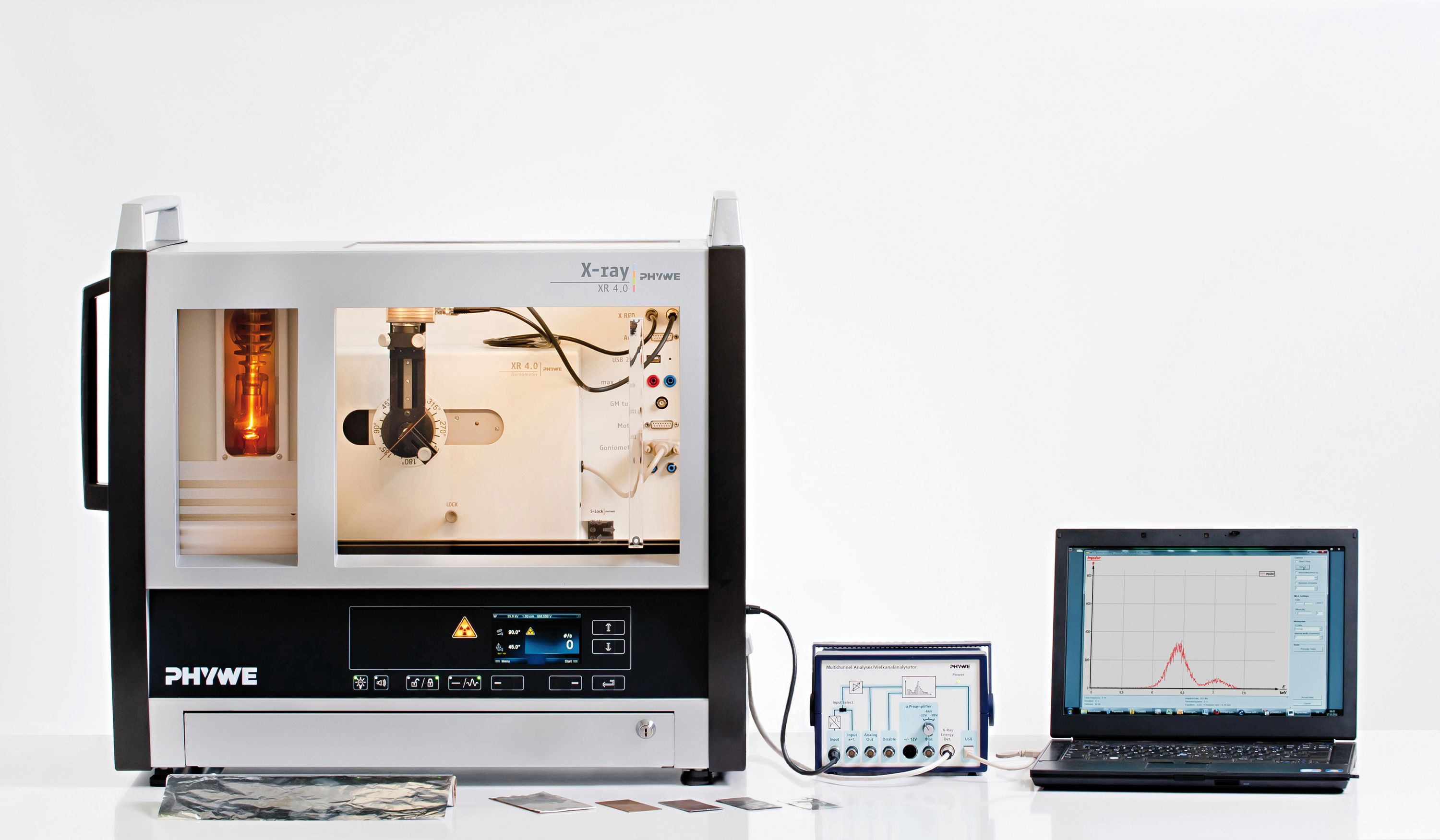Principle
X-ray fluorescence analysis (XRF) is suitable for the non-contact and non-destructive thickness measurement of thin layers as well as for determining their chemical composition. For this type of measurement, the X-ray source and detector are located on the same side of the sample. When the layer on the substrate is subjected to X-rays, the radiation will penetrate the layer, if it is sufficiently thin, to a certain extent, depending on the thickness, and in turn cause characteristic fluorescence radiation in the material of the underlying substrate. On its way to the detector, this fluorescence radiation will be attenuated by absorption at the layer. The thickness of the layer can be determined based on the intensity attenuation of the fluorescence radiation of the substrate material.
Tasks
- Calibrate the semiconductor energy detector.
- Measure fluorescence spectrum of the iron substrate with different numbers n of pieces of aluminium foil with the same thickness placed on the substrate (including n = 0). Determine the intensity of the Fe-Kα fluorescence line.
- Plot the intensity of the Fe-Kα fluorescence line as a function of the number of pieces of aluminium foil placed on the substrate in linear and semilogarithmic way.
- Determine the intensity of the Fe-Kα fluorescence line for various numbers of pieces of aluminium foil that are fastened in front of the outlet of the tube of the energy detector.
- Calculate the thickness of the aluminium foil.
- Execute tasks 2 to 4 for copper foil on molybdenum or zinc substrate.
Learning objectives
- Bremsstrahlung
- characteristic X-radiation
- fluorescent yield
- Auger effect
- coherent and incoherent photon scattering
- law of absorption
- mass attenuation coefficient
- saturation thickness
- matrix effects
- semiconductor
- energy detectors
- multi-channel analysers
